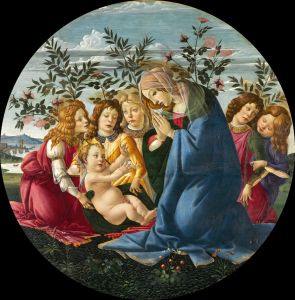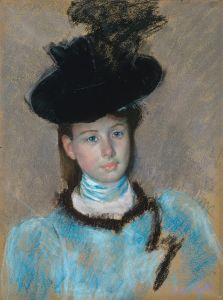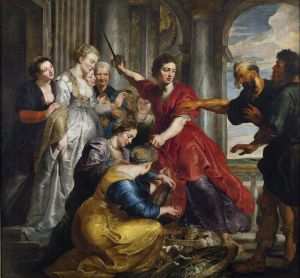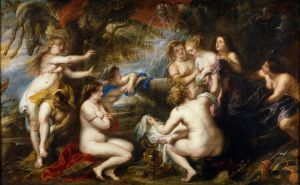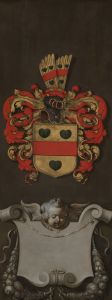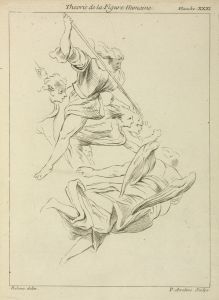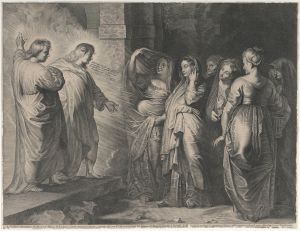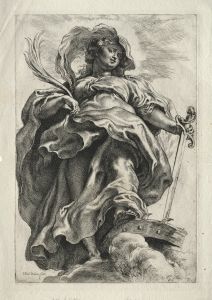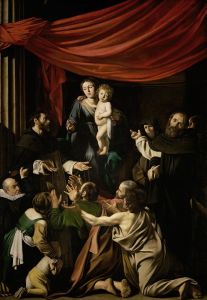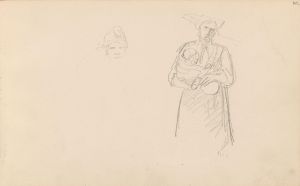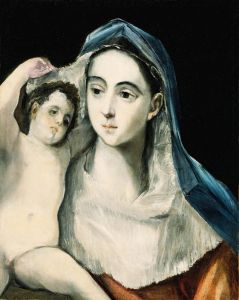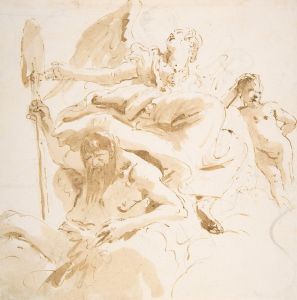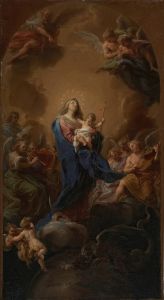
Madonna
A hand-painted replica of Peter Paul Rubens’s masterpiece Madonna, meticulously crafted by professional artists to capture the true essence of the original. Each piece is created with museum-quality canvas and rare mineral pigments, carefully painted by experienced artists with delicate brushstrokes and rich, layered colors to perfectly recreate the texture of the original artwork. Unlike machine-printed reproductions, this hand-painted version brings the painting to life, infused with the artist’s emotions and skill in every stroke. Whether for personal collection or home decoration, it instantly elevates the artistic atmosphere of any space.
Peter Paul Rubens, a prominent Flemish Baroque painter, is renowned for his vibrant and dynamic compositions, often infused with religious and mythological themes. Among his extensive oeuvre, Rubens created several depictions of the Madonna, a subject that held significant importance in the art of the Counter-Reformation. These works typically reflect the artist's mastery in portraying religious figures with a sense of grace, movement, and emotional depth.
Rubens was born in 1577 in Siegen, in present-day Germany, and later moved to Antwerp, where he became one of the most influential artists of his time. His education included a comprehensive study of the works of Italian masters such as Titian, Michelangelo, and Caravaggio, which greatly influenced his style. Rubens' paintings are characterized by their vivid color palette, robust figures, and dramatic compositions, all of which are evident in his religious works.
The Madonna, or Virgin Mary, is a central figure in Christian art, symbolizing purity, motherhood, and divine grace. Rubens' depictions of the Madonna often emphasize these attributes, portraying her with a serene expression and gentle demeanor. His paintings frequently include the Christ Child, angels, and other religious figures, creating a narrative that reflects the theological themes of the period.
One of Rubens' notable works featuring the Madonna is "The Virgin and Child Enthroned with Saints," which exemplifies his ability to blend the sacred with the human. In this painting, the Madonna is depicted with a sense of majesty and tenderness, surrounded by saints who venerate her and the Christ Child. The composition is dynamic, with a harmonious arrangement of figures that guide the viewer's eye throughout the scene.
Rubens' use of color and light in his Madonna paintings is particularly noteworthy. He employed a rich palette, using deep reds, blues, and golds to convey the divine nature of his subjects. The interplay of light and shadow adds depth and dimension, enhancing the emotional impact of the scenes. This technique, known as chiaroscuro, was a hallmark of Baroque art and is masterfully executed in Rubens' work.
In addition to his technical prowess, Rubens' Madonna paintings are imbued with a sense of spirituality and devotion. They reflect the artist's deep understanding of religious iconography and his ability to convey complex theological concepts through visual art. His works were highly sought after by patrons across Europe, including royalty and the Catholic Church, which commissioned many of his religious paintings.
Rubens' influence extended beyond his lifetime, shaping the development of Baroque art and inspiring future generations of artists. His depictions of the Madonna continue to be celebrated for their beauty, emotional depth, and artistic innovation. Today, his works can be found in major museums and collections worldwide, where they are admired for their contribution to the rich tapestry of religious art.
In summary, Peter Paul Rubens' paintings of the Madonna are a testament to his skill as a painter and his ability to convey the spiritual and human aspects of religious subjects. Through his use of color, composition, and light, Rubens created works that resonate with viewers, capturing the essence of the divine in a way that remains impactful to this day.





